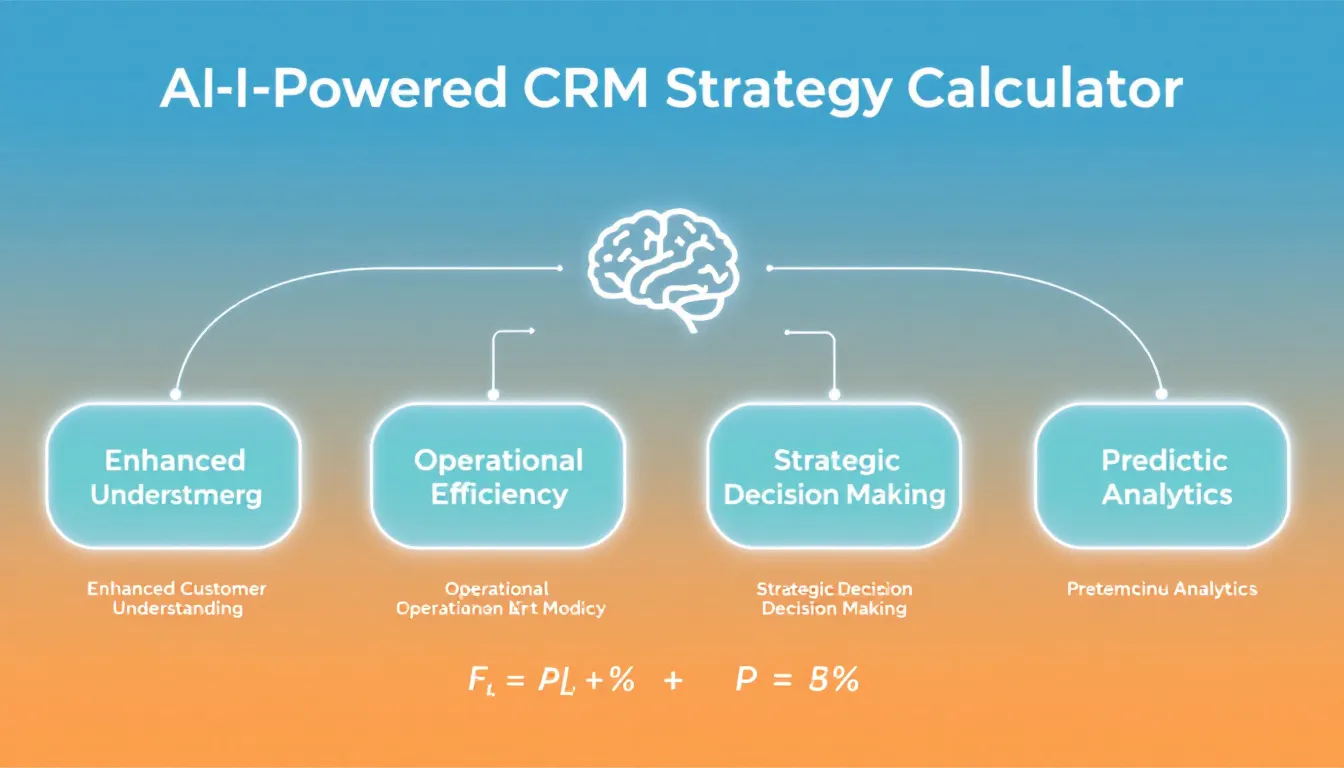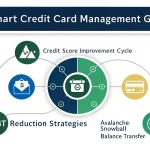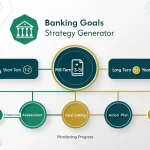AI & Predictive Analytics CRM Strategy
Is this tool helpful?
How to Use the AI-Powered CRM Strategy Calculator Effectively
This AI-powered CRM strategy calculator helps you generate tailored recommendations to improve customer engagement and optimize your CRM processes using predictive analytics. To get the best results, provide detailed and accurate information in the fields below.
Input Fields Explained
- Type of Business and Industry: Enter your specific business sector and niche. For example, you might use “Subscription-based fitness service” or “Online educational platform”.
- Current Customer Data Available: List the different types of customer data you currently collect. Examples include “Customer feedback surveys, user interaction logs” or “Purchase frequency, product reviews”.
- AI Implementation Goals: Describe the key objectives you want to achieve with AI in your CRM strategy. Sample goals might be “Improve upsell conversion rates” or “Automate customer support responses”.
- Current Technology Stack: Specify the CRM platforms or marketing tools you currently use (optional). For instance, “Zoho CRM, Mailchimp” or “Microsoft Dynamics 365, Intercom”.
- Implementation Budget Range: Choose your estimated budget level for rolling out AI-driven CRM improvements.
What the AI-Powered CRM Strategy Calculator Does
This tool analyzes your business context, existing customer data, and AI goals to generate practical strategies for customer engagement. It uses AI and predictive analytics to identify patterns in customer behavior and recommend actionable steps tailored to your unique situation.
Key Features of the Strategy Generator
- Predictive modeling to forecast customer behaviors
- Recommendations for optimizing engagement channels
- Personalization strategies based on customer segments
- Guidance on effective data utilization
- Customer journey mapping for improved experience
Practical Usage of the Tool
After submitting your details, the tool provides customized CRM strategy recommendations. Use these insights to fine-tune your customer interactions and improve key business outcomes, such as retention, satisfaction, and revenue.
Example Calculations Relevant to Your CRM Strategy
You can apply these formulas to measure and track important aspects of your customer engagement efforts:
Customer Retention Score
$$ R = (E \times P \times S) + (C \times I) $$- R = Retention Score
- E = Engagement Level
- P = Personalization Factor
- S = Service Quality
- C = Customer Satisfaction
- I = Interaction Frequency
This equation helps you evaluate how well your retention strategies work by combining multiple engagement and satisfaction factors.
Engagement Effectiveness
$$ EE = \frac{(CR \times IF \times EP)}{TC} $$- EE = Engagement Effectiveness
- CR = Conversion Rate
- IF = Interaction Frequency
- EP = Engagement Points
- TC = Total Contacts
This formula measures the impact of your engagement efforts relative to the total number of contacts, helping you optimize communication strategies.
Benefits of Using the AI-Powered CRM Strategy Calculator
1. Gain Deeper Customer Insights
Understand customer behavior and preferences more clearly, which helps you to:
- Create detailed customer segments
- Predict customer actions such as churn or purchase likelihood
- Tailor messages and offers to individual preferences
2. Improve Operational Efficiency
Streamline your CRM processes by:
- Automating repetitive workflows
- Optimizing the allocation of resources
- Identifying the most effective communication channels
3. Support Smarter Decision Making
Make data-driven choices with insights on:
- Customer lifetime value projections
- Predicted trends in customer engagement
- ROI from CRM initiatives
Real-World Examples of AI-Powered CRM Strategy in Action
Example 1: Subscription-based Streaming Service
- Reduced subscriber churn by 38%
- Increased upsell conversions by 22%
- Improved user engagement metrics by 30%
Example 2: SaaS B2B Company
- Boosted lead qualification rate by 50%
- Expanded average contract value by 35%
- Shortened sales cycle by 40%
Step-by-Step Guidelines for Implementing Your AI-Driven CRM Strategy
Phase 1: Data Collection and Integration
- Combine data from all customer touchpoints
- Ensure accuracy and completeness of your data
- Implement tracking tools to monitor new data streams
Phase 2: Deploy Your AI-Powered Strategy
- Set up automated workflows based on AI recommendations
- Define personalization rules to tailor customer interactions
- Trigger timely engagement actions to nurture leads and customers
Phase 3: Monitor and Optimize Performance
- Track key metrics such as retention and conversion rates
- Collect and analyze customer feedback regularly
- Adjust strategies continually based on data insights
Frequently Asked Questions about AI-Powered CRM Strategy
Q: How does AI improve customer relationship management?
AI analyzes vast customer data to uncover patterns, predict behaviors, and automate personalized engagements. This leads to more relevant interactions and better business outcomes.
Q: Which industries can benefit from this CRM strategy tool?
Businesses across retail, technology, healthcare, professional services, and more benefit by leveraging AI-driven insights to enhance customer engagement and retention.
Q: How often should I review and update my CRM strategy?
Regular updates are essential. Review your strategy quarterly and adjust continually based on key performance indicators and shifting customer demands.
Q: Can I connect these AI-driven recommendations with my current CRM system?
Yes, the suggestions the tool generates are flexible and compatible with major CRM platforms such as Salesforce, HubSpot, Zoho, and Microsoft Dynamics.
Q: What key metrics should I focus on to measure CRM success?
Important metrics to track include customer retention rate, engagement levels, conversion rates, customer lifetime value, and return on CRM investment.
Q: How does predictive analytics boost customer engagement?
By analyzing past data, predictive analytics forecasts future customer actions. This allows you to proactively tailor communications and offers, increasing engagement and satisfaction.
Best Practices for Implementing Your AI-Enhanced CRM Strategy
1. Manage Data Quality Rigorously
- Cleanse data regularly to remove inaccuracies
- Standardize data collection procedures
- Keep your data updated consistently
2. Focus on Customer Experience Optimization
- Deliver personalized communications
- Maintain a consistent experience across all channels
- Engage customers proactively with relevant offers and messages
3. Continuously Monitor and Improve
- Evaluate strategy effectiveness regularly
- Track KPIs to identify areas for improvement
- Implement iterative changes to maximize outcomes
Important Disclaimer
The calculations, results, and content provided by our tools are not guaranteed to be accurate, complete, or reliable. Users are responsible for verifying and interpreting the results. Our content and tools may contain errors, biases, or inconsistencies. Do not enter personal data, sensitive information, or personally identifiable information in our web forms or tools. Such data entry violates our terms of service and may result in unauthorized disclosure to third parties. We reserve the right to save inputs and outputs from our tools for the purposes of error debugging, bias identification, and performance improvement. External companies providing AI models used in our tools may also save and process data in accordance with their own policies. By using our tools, you consent to this data collection and processing. We reserve the right to limit the usage of our tools based on current usability factors.







